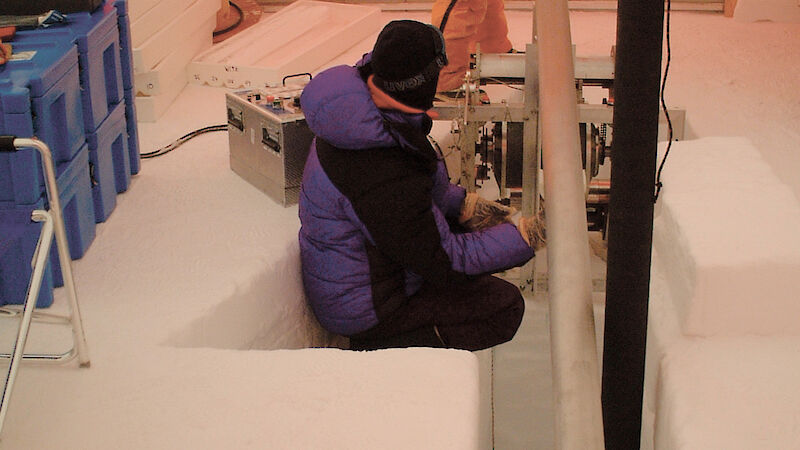Ice core scientists are gearing up to drill the longest and oldest Antarctic ice core, containing a record of the earth’s climate up to 1.5 million years long.
In an address to a major international meeting of Antarctic scientists in Hobart today, Dr Tas van Ommen of the Australian Antarctic Division and the Antarctic Climate and Ecosystems Cooperative Research Centre described how Antarctic ice cores have contributed to our understanding of climate, highlighting future drilling plans and outlining the challenges that remain.
“Antarctic ice cores are time capsules of global climate information as they contain traces of dust, gases, and chemicals from natural sources and human activities around the world,” Dr van Ommen said.
“Each time it snows, this information is laid down in layers of ice — like tree rings — and can be used to detect major environmental changes and variations in the chemistry and circulation of the atmosphere that occurred over months, years or millennia.”
The 1.5 million year old ice core project, for example, will shed light on a fundamental change in ice age cycles that occurred about 900 000 years ago.
Two other ice coring projects will develop networks of ice cores dating back 40 000 and 2000 years, providing a picture of climate since the middle of the last ice age to the post-industrial era.
Along with other initiatives, the projects will enable ice core scientists to better reconstruct past climate, investigate significant climate events in the earth’s history, and separate natural climate variation from human-induced change.
However, extracting information from ice cores and understanding how it relates to global climate, are the two big challenges facing ice core scientists.
“The technology needed to measure the minute chemical traces in ice cores is still evolving and, once measurements are made, the results need to be decoded in terms of recognisable climate properties such as temperature and wind speed,” Dr van Ommen said.
“This involves comparing ice core data from across Antarctica with corresponding climate data from weather stations and other meteorological instruments.”
Antarctic climate records have only been systematically collected for the last 50 years, at a small number of locations, making comparisons with corresponding ice cores difficult in some cases. However, during the International Polar Year in 2007–09, there will be a special observing period where scientists will collect detailed climate information that will enhance their ability to accurately interpret more recent ice core messages.
“As Antarctica plays a key role in global climate, these and other developments in ice core science will continue to enhance our understanding of global climate change issues,” Dr van Ommen said.

